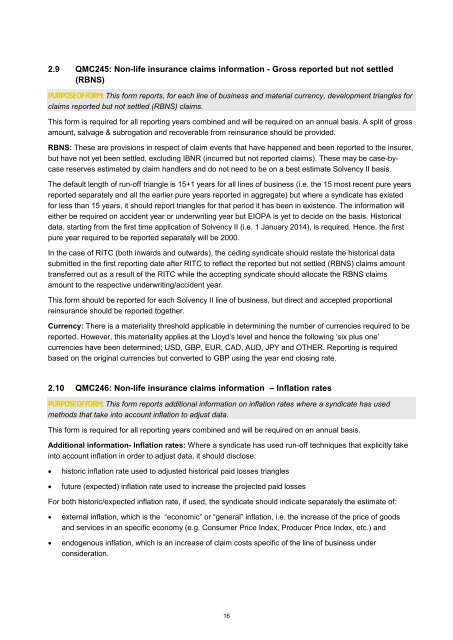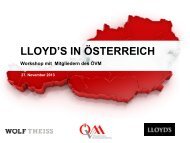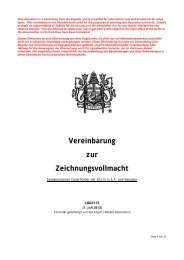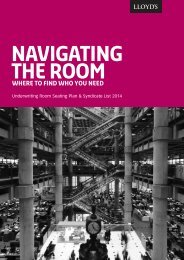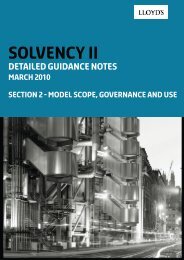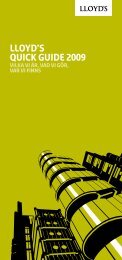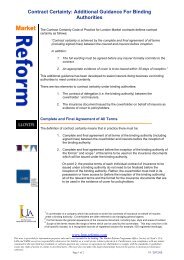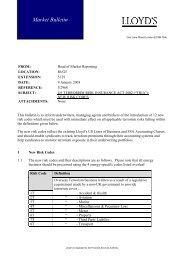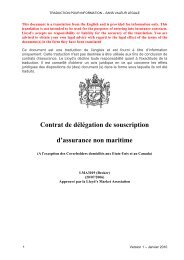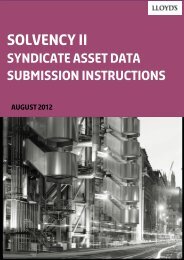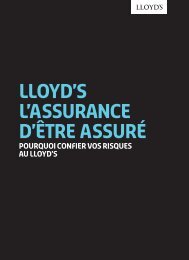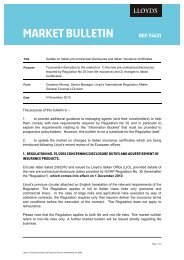You also want an ePaper? Increase the reach of your titles
YUMPU automatically turns print PDFs into web optimized ePapers that Google loves.
2.9 QMC245: Non-life insurance claims information - Gross reported but not settled<br />
(RBNS)<br />
Purpose of form: This form reports, for each line of business and material currency, development triangles for<br />
claims reported but not settled (RBNS) claims.<br />
This form is required for all reporting years combined and will be required on an annual basis. A split of gross<br />
amount, salvage & subrogation and recoverable from reinsurance should be provided.<br />
RBNS: These are provisions in respect of claim events that have happened and been reported to the insurer,<br />
but have not yet been settled, excluding IBNR (incurred but not reported claims). These may be case-bycase<br />
reserves estimated by claim handlers and do not need to be on a best estimate <strong>Solvency</strong> <strong>II</strong> basis.<br />
The default length of run-off triangle is 15+1 years for all lines of business (i.e. the 15 most recent pure years<br />
reported separately and all the earlier pure years reported in aggregate) but where a syndicate has existed<br />
for less than 15 years, it should report triangles for that period it has been in existence. The information will<br />
either be required on accident year or underwriting year but EIOPA is yet to decide on the basis. Historical<br />
data, starting from the first time application of <strong>Solvency</strong> <strong>II</strong> (i.e. 1 January 2014), is required. Hence, the first<br />
pure year required to be reported separately will be 2000.<br />
In the case of RITC (both inwards and outwards), the ceding syndicate should restate the historical data<br />
submitted in the first reporting date after RITC to reflect the reported but not settled (RBNS) claims amount<br />
transferred out as a result of the RITC while the accepting syndicate should allocate the RBNS claims<br />
amount to the respective underwriting/accident year.<br />
This form should be reported for each <strong>Solvency</strong> <strong>II</strong> line of business, but direct and accepted proportional<br />
reinsurance should be reported together.<br />
Currency: There is a materiality threshold applicable in determining the number of currencies required to be<br />
reported. However, this materiality applies at the Lloyd’s level and hence the following ‘six plus one’<br />
currencies have been determined; USD, GBP, EUR, CAD, AUD, JPY and OTHER. Reporting is required<br />
based on the original currencies but converted to GBP using the year end closing rate.<br />
2.10 QMC246: Non-life insurance claims information – Inflation rates<br />
Purpose of form: This form reports additional information on inflation rates where a syndicate has used<br />
methods that take into account inflation to adjust data.<br />
This form is required for all reporting years combined and will be required on an annual basis.<br />
Additional information- Inflation rates: Where a syndicate has used run-off techniques that explicitly take<br />
into account inflation in order to adjust data, it should disclose:<br />
� historic inflation rate used to adjusted historical paid losses triangles<br />
� future (expected) inflation rate used to increase the projected paid losses<br />
For both historic/expected inflation rate, if used, the syndicate should indicate separately the estimate of:<br />
� external inflation, which is the “economic” or “general” inflation, i.e. the increase of the price of goods<br />
and services in an specific economy (e.g. Consumer Price Index, Producer Price Index, etc.) and<br />
� endogenous inflation, which is an increase of claim costs specific of the line of business under<br />
consideration.<br />
16


